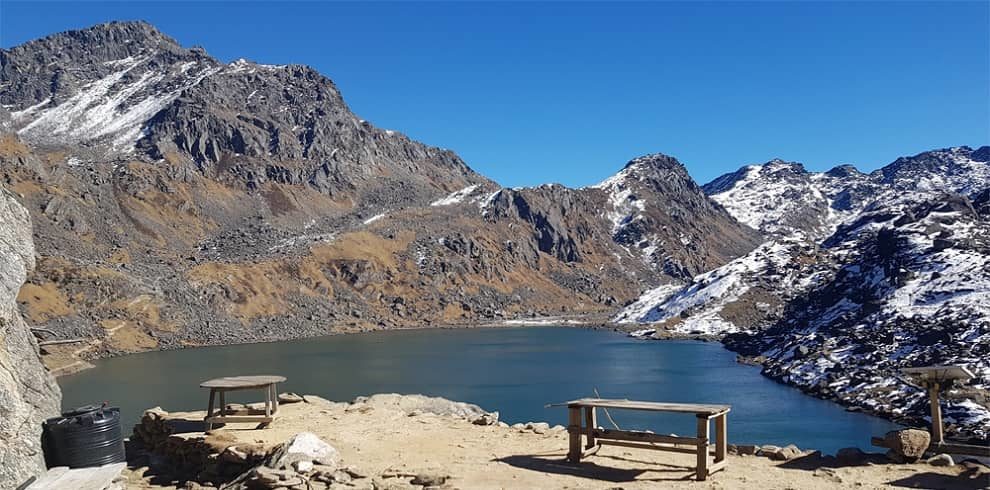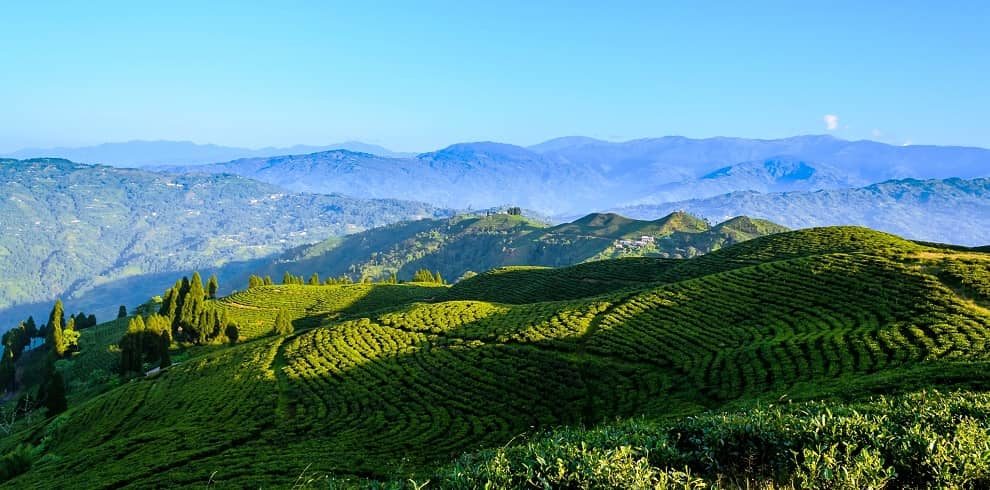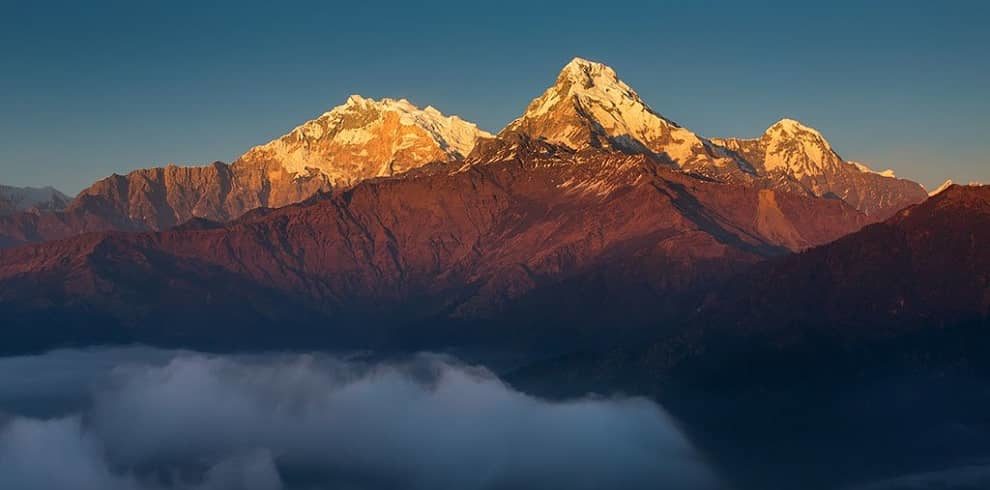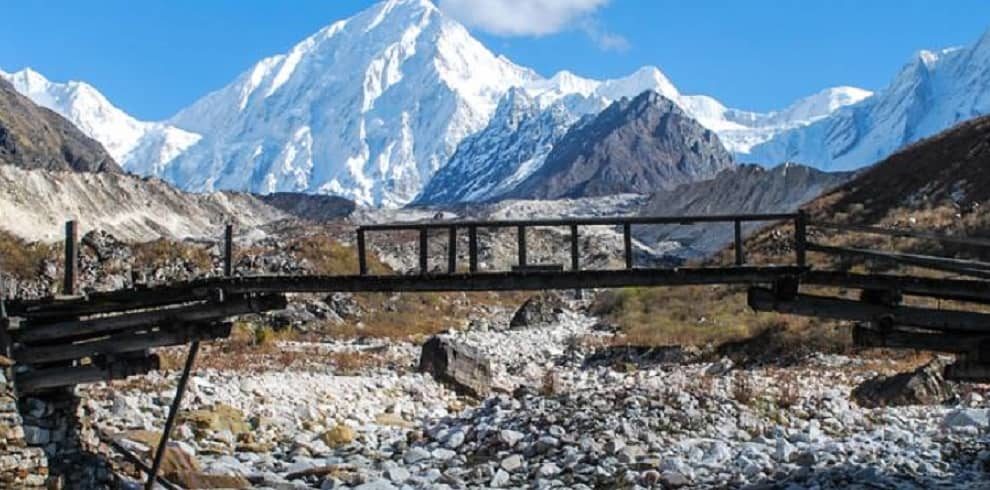Introduction To Langtang Gosainkunda Trek In Nepal
One of the most prominent tourist attractions in the Langtang National Park is the Gosainkunda Langtang Trek.
It’s close to Kathmandu, in the northeastern section of central Nepal. It can even be seen from the Kathmandu Valley.
This trek offers deep gorges, rocky terrain, pine forests, yak pastures, Buddhist religious practices, mystical monasteries, picturesque villages, hillside terraces, serene valleys, and breathtaking glaciers originating from high mountains, as well as insight into Buddhist religious practices, mystical monasteries, picturesque villages, hillside terraces, serene valleys, and breathtaking glaciers originating from high mountains.
The trail also brings us to Gosainkunda (4,380m/14,620ft), a sacred alpine freshwater lake high in the Rasuwa Mountains.
This hike begins with a drive along the Trishuli River, which flows north from Kathmandu, passing through Trishuli Bazaar and Dhunche before arriving in Syabrubesi.
The trip begins in Syabrubesi, a Tamang settlement on the Bhote Koshi River’s banks. The hike will take us along the Langtang River until we arrive at Hotel, where we will spend the night.
We’ll travel from Lama Hotel to Langtang Village, a big Tamang hamlet, the next day. We travel to Kyangin Gompa from Langtang Village.
We’ll take a day to acclimate at Kyangin Gompa. You can visit the yak cheese factory, Tserko Ri Viewpoint, and Kyangin Gompa monastery while you’re acclimating.
Then we return to the Lama guesthouse and continue walking through the magnificent Langtang Valley to Gosaikunda, a significant Buddhist and Hindu pilgrimage site. Gosaikunda Lake’s waters are said to have mystical healing properties.
We trekked from Lama Hotel to Thulo Syabru, then from Thulo Syabru to Cholangpati, and lastly to Gosainkunda.
Our trip from Gosainkunda to Ghopte in the picturesque Helambu region will take us via the Laurebina La High Pass. We descend from Ghopte to Kutumsang via rhododendron, pine, and juniper forests, as well as pleasant meadows.
We continue our descent the next day via Pati Bhanjyang to Chisapani. We travel from Chisapani to Sundarijal on the final day of the journey before catching a bus back to Kathmandu.
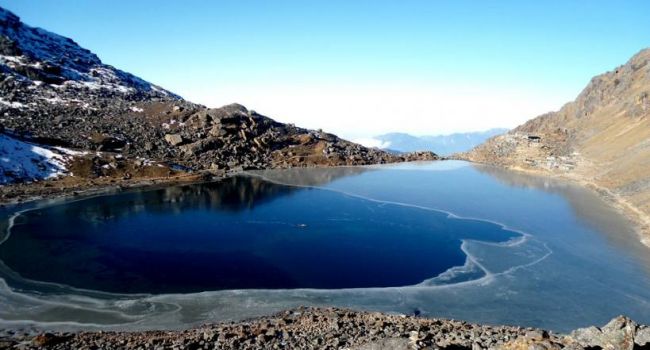
This package includes bus transportation. If you want to be more comfortable, you can hire a jeep for an additional fee.
Highlights Of Langtang Gosainkunda Trek In Nepal
- Langtang, the valley of glaciers, pine trees, lush meadows, and terraced farmland, is a must-see.
- Snow-capped mountains, waterfalls, deep gorges, stone-driven mills, and suspension bridges provide breathtaking views.
- Views of Langtang Lirung (7,345 meters), Gang Chenpo (6,388 meters), Naya Kanga (5,846 meters), Dorje Lakpa (6,966 meters), Kimsung (6,781 meters), and Yansa Tsenji (6,781 meters) (6,575m)
- Tibetan borderland
- The Lirung and Kim Sung glaciers are stunning.
- At Kyanjin Gompa, there is a local cheese factory.
- Buddhist monasteries, prayer flags, and chortens can all be found in this area.
- Side trip to Kyanjin Ri (4,773m), Tsergo/Cherko Ri, and the sacred Gosainkunda Lake at an altitude of 4,600m (4,984m) Viewpoints
Benefits Of Langtang Gosainkunda Trek In Nepal
- In a private vehicle, you will receive a free airport to hotel transfer upon arrival and a hotel to airport transfer upon departure.
- Pulse oximeters are used to measure blood oxygen saturation levels at high elevations in order to detect early signs of altitude sickness and other health hazards.
- Medical supplies
- During the trek, we will store your bags for free in our store.
- If you don’t have your own, sleeping bags and down jackets can be rented.
Equipment lists for Gosaikunda Lake Trek
The trek to Gosaikunda Lake necessitates planning. For the trek, please pack only the most basic clothing and equipment. The following list should assist you in picking the necessary items for the hike.
Head
- Scarf or hat for the sun
- Winter hat, insulating hat, or a hat with a wide brim
- Extra batteries for the headlight
Face
- Sunscreen
- Sunglasses that block UV rays
- Wipes for the face and body
Hands
Lightweight gloves
Heavyweight winter gloves
Body
- Shirts for hiking
- Shirt with a long sleeve made of synthetic fiber.
- Rain jacket with hood
- Jacket made of fleece
- Cotton pants that are light and airy.
- T-shirt (bring lightweight wool)
- Underwear made of polypropylene
- Jacket with down feathers (available for rent in Kathmandu)
- Sweater
- Jacket and pants that are waterproof
Footwear
- Boots for Hiking
- Socks made of thick wool (Take an extra pair of thick light socks)
Essential gear
- A daypack or a backpack (Size depends on whether you take a porter or not)
- Bottle with a heating element
- Purification of water
- Pole for hiking
- Bag for sleeping (-15 degree bag is best for high altitude trekking)
Toiletries
- a drying towel of medium size
- Toothbrush
- Toothpaste
- Deodorant/floss/toilet paper
- Biodegradable soap in a bar
- a pair of nail clippers
- Mirror, little
Personal accessories
Money
Watch
Cell phone
Camera
Extra items
- Kit for first aid
- Extra passport pictures and passport photocopies
- Pencil and notebook
- Binoculars
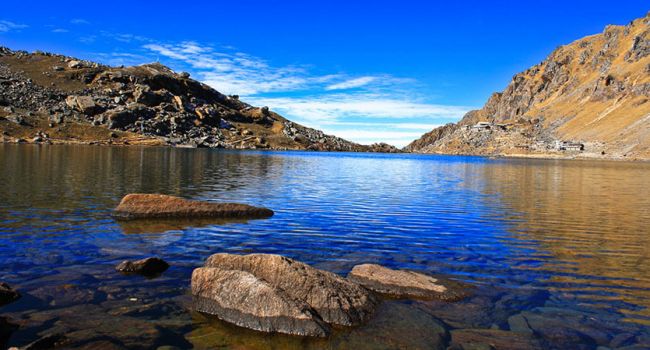
Langtang Gosaikunda Trek Weather, Altitude – Tour Package Info
Langtang Gosaikunda Trek in Nepal
You will arrive at Tribhuvan International Airport in Kathmandu before 3 p.m., at least one day before the journey begins. Arrival in Kathmandu necessitates an overnight stay in a hotel. The next day, we’ll take the local bus to our destination. Your journey starts in Syabrubesi (Gateway to Langtang). We can either take a local bus for an eight to nine-hour ride from where the Langtang trek begins, or we can drive ourselves.
The package includes local transportation (KTM to Syabrubesi and Sundari Jal – Kathmandu). A private jeep can be rented for an additional fee for more comfort.
Complimentary Airport Pickup
For valued clients who have booked a package with us, we provide complimentary airport arrival and departure transfers. At the airport, our agent will be holding a leaflet with your name on it. They will greet you and give you a marigold garland or khada as a welcome gesture before driving you to your accommodation in a private vehicle.
We ask that all of our valued clients arrive in Kathmandu by 3 p.m. at least one day prior to the trip departure date. We need time to conduct a trip briefing, during which we offer you information on your journey and inspect your equipment (luggage) to ensure that you are well prepared for the walk.
Langtang Gosaikunda Trek Accommodation Details
The Langtang Gosaikunda Trek includes twelve nights of lodging in the best possible lodges across the trek region. We provide six nights in private attached bathroom rooms at Syabrubesi, Langtang Village, Kyanjin Gompa(2N), Thulo Syabru, and Chisopani, as well as six nights in ordinary rooms at Lama Hotel (2N), Cholangpati, Gosainkunda Lake, Ghopte, and Kutumsang.
Wherever possible, we will book a single private room with an attached bathroom for solitary trekkers, as well as a single private room in most cases.
Two nights of hotel accommodation in Kathmandu may be required before and after the trek, but this is not included in the package. There are hotels in Kathmandu to suit all budgets and interests.
Meals during the trek
The Langtang Gosaikunda trek takes you to extremely high altitudes. As a result, your body demands a sufficient amount of nutrient-dense meals. In trek regions, we supply adequate nutritious and appetizing meals, but you will not have access to all of the options available in towns. During the walk, we supply you with 13 breakfasts, 13 lunches, and 12 dinners.
The following are some of the most popular menu items:
Oatmeal, Corn Flakes, French toast with Jam, Butter, Cheese, and Honey, Tibetan bread or Chapati, and local Tsampa porridge are among the thirteen breakfast options. Fruits, Vegetables, Hot Drinks, Eggs, Pancakes, Muesli Breads (varieties of teas and coffees, hot chocolates, etc.)
Dhal, Bhat, Tarkari, Tibetan Bread, Soups, Momo (dumplings), Macaroni dishes, Tenduk, Spaghetti Noodles, Thukpa, Pasta, Vegetable curry, Potatoes, Vegetables, Salad Pizza (Tomato, Mushroom, Mixed), Snacks (Papad, Prawn), Desserts (Rice Pudding, Apple Pie), etc.
Dhal, Bhat, Tarkari, Tibetan Bread, Soups, Momo (dumplings), Macaroni, Tenduk Spaghetti, Noodles Thukpa, Pasta, Vegetable Curry, Potato items, Vegetable and Salad Pizza (Tomato, Mushroom, Mixed), Snacks (Papad, Prawn), Korean Ramen, Desserts (Rice Pudding, Apple Pie), Hard Drinks, Steaks, etc.
Traditional, Asian, and western cuisine are all available on the menu, although the choice gets shorter as we travel higher.
At high elevations, we strongly recommend fresh vegetable items and plenty of liquids like green tea, lemon tea, hot lemon, ginger tea, and garlic soup (must). Though there are many non-vegetarian options accessible in hike regions, we do not advocate any of them because the meat may not be hygienic or healthful.
Similarly, we recommend avoiding dairy, alcoholic, caffeinated, and hot chocolate goods, as experts advise against them on high-altitude hikes.
All personal costs (alcoholic, hot (tea/coffee), and cold drinks) in tea houses/ lodges are excluded from the package, save for standard meals (breakfast, lunch, and dinner with seasonal fruits).
Best time for Langtang Gosainkunda trek
For a trek to Langtang Gosaikunda, the weather is the most important consideration. The finest seasons for an easy hike with spectacular mountain views are spring and fall. The trek zones are cold in the winter due to snowfall, while the summer rain makes the paths slick and damp.
January – February
March – April
May – June
July – August
September – October
November – December
The weather in the mountains is fickle and changes frequently.
Acclimatization
Your 13-day Langtang Gosaikunda Trek includes two nights over 3500 meters, when you may experience altitude sickness, sometimes known as acute mountain sickness. At Kyanjin Gompa, we’ll be acclimating. We will visit the Kyanjin Gompa monastery itself, and the cheese factory, and trek to the Tserko Ri Viewpoint while acclimating in Kyanjin Gompa.
Trekkers are prone to altitude sickness, but significant altitude sickness necessitates rapid care and should not be ignored. Our trek leaders and guides are well-trained in first aid and have a lot of expertise. We strongly advise you to notify your group leader and guide as soon as you see any indications or symptoms.
Your trek leader or guide will advise you on how to avoid getting altitude sickness. Taking your time while trekking and drinking enough of water are the best ways to avoid altitude sickness (at least 4 liters per day). The only way to recover from acute altitude sickness is to descend as soon as possible.
Please be aware that your group leader has the authority to halt your ascent if you are in poor health. It’s important to remember that some people are more susceptible to altitude sickness than others.
Trekking in Group | Solo Private Trek
We organize both group and private treks. Group discounts are available dependent on the size of your group. The larger your group, the greater the savings. Please see our price list for further information. Simply click the – we offer group discounts – link on the right.
Having said that, we can accommodate groups of any size and even add an assistant guide for groups of 12 or more.
A typical day on the Trek
Every day will be different, with activities such as enjoying the journey and scenery, shooting photos, and touring the surrounding villages. As you trek, qualified expert Sherpas will provide you with information and historical details about the locations.
The majority of your luggage will be carried by our porters, but you may need to bring a small normal bag for your valuables.
After breakfast, we head off on the day’s walk between 7 and 8 a.m., depending on the length and character of the hike. After three to four hours of hiking, we’ll stop for lunch and an hour of recuperation before continuing our journey.
The afternoon stroll is usually shorter, lasting between two and three hours. You can enjoy the refreshments after you get to your overnight lodge/tea house/tent, and then you are free to explore the area.
Dinner is served between 6 and 7 p.m. After supper, you have some free time to engage in casual chat. The excursion leader/guide will give you an overview of the next day’s activities. After the briefing, you can play monopoly, play cards, or watch mountaineering films on board. Before going to bed, the majority of our guests study the Nepali language or read novels.
How to Communicate During the Trek?
For a nominal fee, you can use the internet at the lodges, but after you reach high elevations, you’ll have to communicate via phone.
Our office will connect with all of our valued clients by Signal, WhatsApp, phone, Messenger, and other means at least once a day to ensure that they are fine, safe, and comfortable.
You might get some signals along the route, depending on the network you’re using, but they’re not particularly strong at high altitudes. In Kathmandu, though, you may easily obtain a local sim card.
In most cases, you will be able to connect to the internet at all of the lodges/hotels where you will be staying.
Wi-Fi is usually available during the walk-in lodges/lodges for an additional fee.
Extra personal expenses on trekking
In Kathmandu, the clients are responsible for their own meals and lodging. You may book them conveniently online, or we can do it for you if you want.
Similarly, you must pay for visa processing, travel insurance, beverages, trip snacks, hot and cold drinks, souvenirs, and tips to trekking crew members, among other things. Bringing cash (Dollars) and changing it to Rupees is recommended. In the Nepali market, only Rupees are accepted.
Electricity, battery recharge, water on trekking
In all lodges, electricity for camera and phone recharge is available at an additional expense. During the trip, you can either buy pre-packaged mineral water or bring boiled water with you. You will also receive a water-purifying pill.
We advise against drinking water from rivers or taps because the water may be contaminated.
Trek travel insurance
This Trek requires travel insurance. Before beginning the hike, all trekkers must produce a copy of their comprehensive travel insurance policy certificate to us. Medical and emergency repatriation must be covered, as well as helicopter rescue and evacuation costs at high altitudes (up to 6000m).
Based on the experiences of our former clients, we may recommend insurance firms to you. We do not, however, sell insurance coverage. Within a week of booking the trek, we ask that all trek participants provide us with their comprehensive insurance information. In an emergency, we’ll prepare a speedy, successful rescue using your insurance policy and other documentation you supplied us.
Before you acquire travel insurance, call your provider and double-check that it covers helicopter rescue and evacuation up to 6000 meters. Do not rely solely on the material of the insurance company’s website.
How to get a visa for Nepal?
Except for Indian nationals, all foreigners must have a valid visa to enter Nepal. At Tribhuvan International Airport and Nepal’s borders with India and Tibet, you can obtain an on-arrival visa. Visit www.immigration.gov.np. for additional details.
You’ll need a passport that’s valid for at least six months, a passport-size photo, and visa fees to apply for a visa. A 30-day visa costs $50 at the moment (to be paid in cash).
A free visa will be given to children under the age of ten. It is strongly recommended that you examine the current regulations. Visa regulations are subject to change at any time. Citizens of China and members of the South Asian Association for Regional Cooperation (SAARC) (Bangladesh, Bhutan, India, Maldives, Pakistan, and Sri Lanka) are exempt from visa fees.
Certain countries’ citizens may be denied a visa upon arrival. On-arrival visas are not available for citizens of Nigeria, Ghana, Zimbabwe, Swaziland, Cameroon, Somalia, Liberia, Ethiopia, Iraq, Palestine, and Afghanistan. If you are a citizen of one of these countries, please contact the Nepalese Embassy in your country.
Before we embark on our journey, we’ll double-check everything (luggage, equipment, etc.) during our briefing.
Currency Exchange in Nepal | USD to NPR
Nepali Rupees (NPR/Rs) are the local currency.
(1 USD = ~ Rs.124 NPR).
You can exchange major foreign currencies through local banks and legitimate money exchanges in Kathmandu and all over Thamel. Legitimate money exchanges display their ongoing exchange rates visibly to the public.
Please note – only 100 INR (Indian Rupees) and 2000 INR notes are legal in Nepal.
Despite having the security advantage of traveler’s cheques, we prefer cash exchange. It helps avoid lengthy processes and high bank commissions.
You can withdraw cash (in Rupees)from ATMs all over Kathmandu and Thamel itself. Many of these ATMs are open around the clock. The maximum withdrawal amount is 35,000 Rupees for a 500 Rupees processing fee for foreign cards.
If you use the money exchange facilities at banks and financial institutions, they impose a service charge fee of about 4% or more.
During the trek, there are no banks and money exchange services so you should exchange your money in Kathmandu, depending on how much personal expense you require. Only Nepali Rupee is accepted in trekking regions.
Most established banks in Asia will only accept foreign currency notes that are not old, torn, or faded. Please ensure that you have new, clean notes.
How much luggage can I take during the Trek?
Your luggage must not exceed 9 kilograms per trekker. One porter will be allocated to each of the two trekkers, and the total weight of their luggage should not exceed 18 kg. Our porters are never overworked.
You may, however, need to bring your own knapsack or backpack (with valuables or anything important). Carry only what you need. Excess baggage can be safely stored at your hotel or at our store for no charge.
Before we begin the journey, we will double-check everything (luggage, equipment, etc.) during our briefing.
Trek Safely
All of our clients’ safety, security, and happiness are guaranteed by us. We place the highest priority on your safety. For each trip, we will bring all of the essential gear, equipment, and first-aid kits. Our guides and leaders have completed thorough first-aid training.
If a trekker becomes ill as a result of the altitude, we will analyze the situation and keep everyone safe. In the event of an emergency, the rescue chopper will be on standby to transport you back to the lower elevation. Every team member will be together for safety during the walk, and there will be no danger of being lost in hazardous terrains.
Responsible travel
Our philosophy is to photograph the voyage while leaving only footsteps. We believe in sustainable tourism and exclusively offer eco-friendly excursions.
We collaborate with the Kathmandu Environmental Education Project (KEEP) to plan eco-friendly itineraries that satisfy the needs of both tourists and local populations in the trekking areas.
Our Crew
Our knowledgeable guide/Sherpa will accompany us on the trek to ensure your safety and comfort. Your stuff will be carried by porters.
Our members are locals from high Himalayan remote places, and they have exceptional physical endurance at high altitudes.
We value all of our employees, so we pay them well and take care of their insurance, clothing, food, and lodging throughout the trip. When our guides and porters become unwell or injured, they receive medical attention.
Only happy people can make others happy, thus we always make sure that our team members are happy. Members of our trek/expedition team have the following qualifications:
- Authorized Trekking Guide Training Certificate
- Intensive Wilderness First Aid Training
- Fluency in English and another major language
- Conservation and Biodiversity Training
- Experience with rock climbing
Tipping during trek
Tipping is optional and should be dependent on the quality of service received. A tip is an accepted and respected technique in Nepali society to express gratitude (Dhanyabad) for good service.
On the last day of the walk, the majority of our guests offer advice. The amount you tip is totally up to you, and it may be more or less based on your impression of service quality, the length of your trip, your budget, and your appreciation for their efforts.
100% Guaranteed Booking
We are a government-approved and bonded trek and tour company in Nepal. We are also members of the Nepal Mountaineering Association (NMA) and the Trekking Agency Association of Nepal (TAAN) (NMA). As a result, you may book your trek/expedition with complete trust.
As a deposit, we require 10% of the total trip cost. Within a week of booking, please send your documentation, including a copy of your passport, passport-size pictures, travel insurance policy, and arrival and departure flight information.
You can make a 10% deposit via bank transfer, western union, or online payment on our website, and the full balance when you arrive in Nepal. Cash, bank transfer, and credit cards are all acceptable methods of payment. In addition, you will receive payment choices in your email.
Last-minute Trek booking in Nepal
Even though it is always a good idea to plan ahead for your excursions. However, for those who are unable to do so, we provide a special last-minute booking option. To take advantage of this benefit, you must pay the entire trip cost 24 hours before the trek’s departure.
Even while we do our best to plan treks at any time, there is a small potential of a trek delay due to events beyond our control, such as the inability to obtain air tickets or unfavorable weather.
Can I extend my trip?
If you wish to stay in Nepal for a few days after the trip, we can arrange enjoyable activities for you, such as exploring areas in and around Kathmandu, Chitwan jungle safari, paragliding, rafting, canoeing, and so on.
Feedback
We offer a farewell meal at the end of the trek, and we will also award you with a trek completion certificate after dinner (hard copy). It’s also a great opportunity to tell us about your experience and provide us feedback.
Overview Of Langtang Gosainkunda Trek
- The Langtang Gosainkunda Hike is for individuals who want to see the Himalayan mid-hills, and high-altitude lakes, including the sacred Gosainkunda Lake, and other Himalayan glaciers. The trek region is located on the Nepal-Tibet border, just north of Kathmandu.
- This modest path, located just north of Kathmandu Valley, will take you from the banks of the Bhote Kosi River via the Langtang Valley and to the sacred Gosaikunda Lake.
- On this Himalayan excursion, you’ll witness panoramic mountain views, walk through beautiful woods, and sleep in Nepali tea houses.
